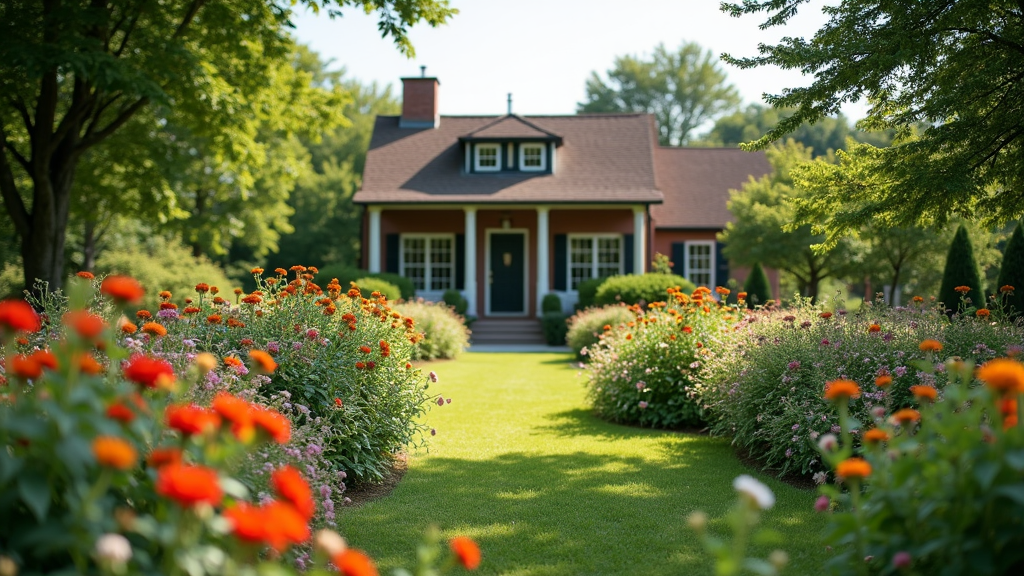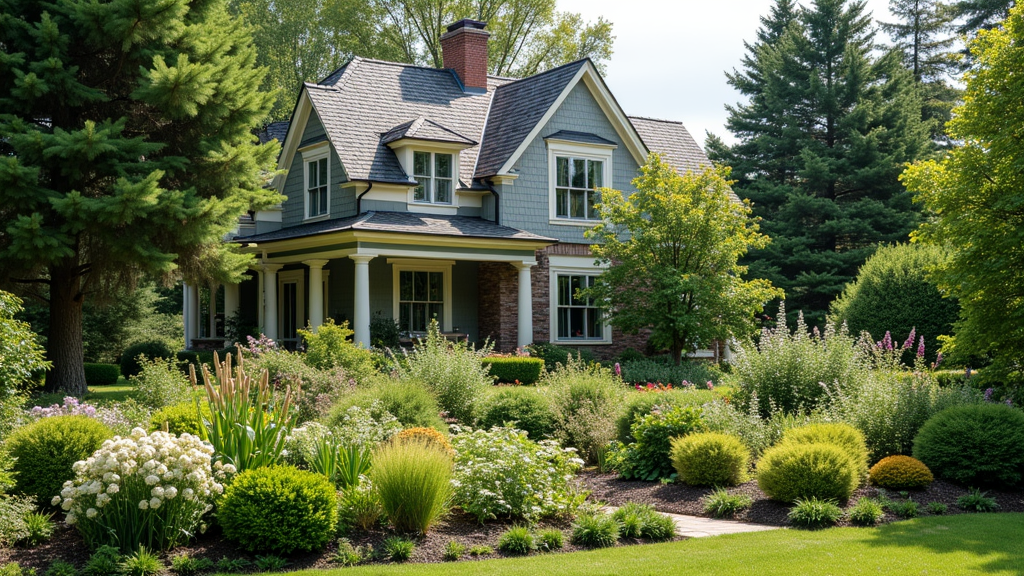Introduction: Embracing the Future
The world we live in is rapidly evolving, and so are the ways we approach landscape design. As technology continues to advance at a breakneck pace, the integration of smart technology into designing landscapes is not just a trend; it's becoming a necessity. Imagine being able to monitor your garden remotely, adjust lighting according to the weather, or even create an automated irrigation system that conserves water while ensuring your plants thrive. In this article, we'll explore The Future of Smart Technology in Landscape Design and how it transforms our outdoor spaces.
The Future of Smart Technology in Landscape Design
What is Smart Technology?
Smart technology refers to devices and systems that connect to the internet and can be controlled remotely via smartphone applications or other digital interfaces. In landscape design, this encompasses various tools and innovations aimed at enhancing both functionality and aesthetics.
Why Should We Integrate Smart Technology into Landscape Design?
Integrating smart technology into landscape design can yield numerous benefits:
Efficiency: Automated systems save time and resources. Sustainability: Smart technologies can promote eco-friendly practices. Convenience: Remote access allows homeowners to manage their spaces effortlessly. Customization: Tailored solutions cater to specific needs and preferences.Key Components of Smart Landscape Design
1. Automated Irrigation Systems
Automated irrigation systems are a game-changer for landscape design. They use sensors to monitor soil moisture levels, weather conditions, and plant types to deliver precise amounts of water when needed.
- Benefits: Conserves water Reduces labor costs Enhances plant health
2. Smart Lighting Solutions
Lighting plays a crucial role in enhancing landscape aesthetics during nighttime. With smart lighting systems, homeowners can control brightness levels, colors, and schedules through their smartphones or voice-activated assistants.
- Key Features: Energy efficiency Customizable settings Increased security through motion sensors
3. Landscaping Drones
Drones have revolutionized many industries, including landscape design. They provide aerial views that help designers plan more effectively by assessing topography and vegetation from above.
- Advantages: Accurate measurements Enhanced planning capabilities Quick inspections of large areas
The Role of Artificial Intelligence (AI)
How is AI Transforming Landscape Design?
Artificial Intelligence plays an integral role in optimizing designs by analyzing data related to soil conditions, plant growth patterns, and user preferences.
- Applications: Predictive analytics for plant health Intelligent design suggestions based on historical data Automated maintenance scheduling
The Impact of IoT on Landscape Management
What is IoT?
IoT stands for the Internet of Things—the network of physical objects embedded with sensors that communicate with each other over the internet.
- IoT applications in landscape design include: Soil sensors that relay information about nutrient levels. Weather stations providing real-time climate data. Mobile apps offering insights into maintenance needs.
Designing Landscapes with Sustainability in Mind
Why Sustainability Matters in Landscape Design?
As environmental concerns grow globally, sustainable practices in landscape design have become paramount. Smart technology facilitates these practices by promoting efficient resource use.
Eco-Friendly Practices Enhanced by Smart Tech:
Water Conservation Techniques- Drip irrigation powered by moisture sensors reduces waste.
- Using native plants requires less maintenance and irrigation.
- Solar lights reduce energy consumption while enhancing beauty.
Benefits of Sustainable Landscape Design
Adopting sustainability-focused practices leads to:
- Improved biodiversity Reduced environmental impact Increased property value
User-Centric Designs: Enhancing Homeowner Experience
Personalization through Smart Technology
Homeowners desire unique outdoor experiences tailored to their lifestyle needs.
How Can We Achieve Personalization?
Customizable settings for lighting and irrigation Smart gardens that adapt based on user interaction Mobile apps allowing users to visualize potential designs before implementationEnhancing User Interaction with AR/VR Technologies
Augmented Reality (AR) and Virtual Reality (VR) empower homeowners to visualize changes before they happen.
- Users can walk through virtual models of their redesigned landscapes.
The Economics of Smart Landscape Solutions
Are They Worth the Investment?
Investing in smart technology for landscape design can seem daunting initially; however, the long-term benefits often outweigh upfront costs.
Cost-Benefit Analysis:
| Feature | Initial Cost | https://zenwriting.net/mithirkmdn/designing-with-purpose-the-importance-of-functionality-in-landscapes Long-Term Savings | |-------------------------------|---------------|--------------------| | Automated Irrigation | $$ | $$$ | | Solar Lighting | $$ | $$$$ | | Drone Services | $$$ | $$ |
Challenges Facing Smart Landscape Design
What Are Common Obstacles?
While integrating smart technology offers numerous benefits, certain challenges must be addressed:
Initial Installation Costs Technological Literacy Among Homeowners Maintenance Requirements for Complex SystemsFAQs About The Future of Smart Technology in Landscape Design
FAQ #1: What are some examples of smart technology used in landscaping?
Smart technologies like automated irrigation systems, solar-powered lighting solutions, drones for aerial assessments, soil moisture sensors, and mobile apps for monitoring plant health are widely used today.
FAQ #2: How does smart technology enhance sustainability?
Smart technologies enable more precise resource management—like water conservation through automated irrigation—thereby reducing waste and promoting eco-friendly practices within landscape design.
FAQ #3: Can I control my garden remotely?
Absolutely! Many modern landscaping solutions come with mobile applications that allow you to manage lighting, watering schedules, and even monitor plant health from anywhere via your smartphone or tablet.
FAQ #4: Is it expensive to implement smart landscaping solutions?
While there may be initial setup costs associated with smart landscaping technologies, many homeowners find that they save money over time due to reduced water bills and lower maintenance expenses.
FAQ #5: Do I need technical knowledge to use these devices?
Most smart landscaping devices are designed for ease of use; however, a basic understanding of how your system works will help you maximize its potential benefits effectively.
FAQ #6: How do I choose which smart technologies are right for my landscape?
Consider factors such as your budget, specific landscaping goals (e.g., sustainability), local climate conditions, available space, personal preferences regarding aesthetics or functionality—then consult experts if needed!


Conclusion: Looking Ahead at The Future
In conclusion, embracing smart technology in landscape design isn’t merely an option; it’s becoming essential as we navigate through changing environmental conditions and societal expectations surrounding sustainability and convenience. As we’ve explored throughout this article on The Future of Smart Technology in Landscape Design, integrating innovative tech solutions enables us not only to beautify our outdoor spaces but also ensures they remain functional while conserving precious resources—ultimately leading us toward greener living aspirations! So why wait? Dive into the future today!